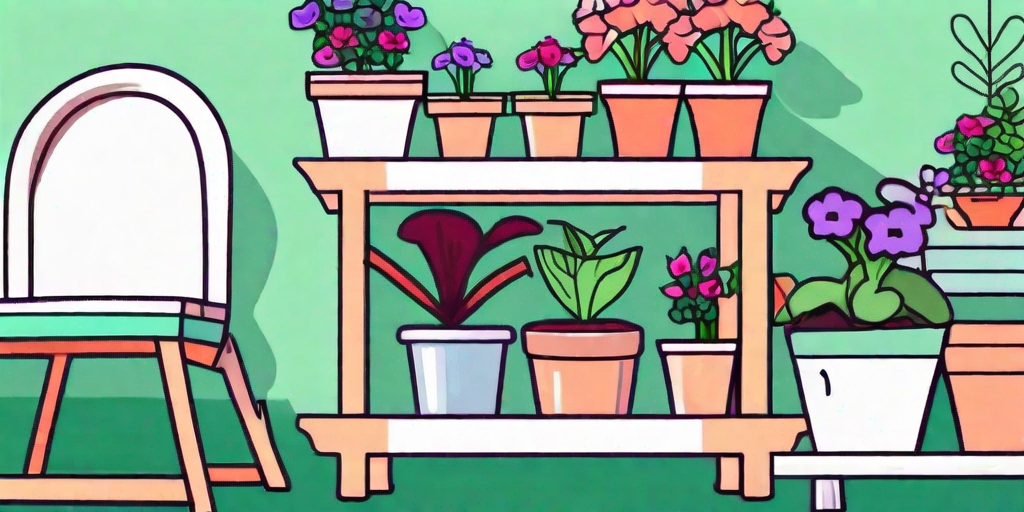
If you've ever been a proud petunia parent, you know that these plants are more than just a pretty face. They're the life of the party in your garden, the belle of the ball on your balcony, and the diva of the deck. But, like any diva, they require a bit of pampering. In this guide, we'll delve into the world of petunia care, or as we like to call it, petunia potty training. So, buckle up, plant lovers, it's going to be a wild, leafy ride!
The Basics of Petunia Care
Understanding Your Petunia
Before we dive into the nitty-gritty of petunia potty training, let's get to know our green friends a little better. Petunias are annual flowering plants native to South America. They're known for their vibrant colors and lush blooms, but they're also known for their diva-like demands. They need just the right amount of sun, water, and nutrients to thrive. Too little, and they'll sulk. Too much, and they'll throw a tantrum. It's a delicate balance, but don't worry, we've got you covered.
There are many different varieties of petunias, each with its own unique needs. Some prefer full sun, while others do well in partial shade. Some like their soil moist, while others prefer it a bit drier. It's important to know what type of petunia you have so you can give it the care it needs. Think of it as getting to know your petunia's personality. After all, every diva has her quirks!
Creating the Perfect Environment
Now that we understand our petunias a little better, let's talk about creating the perfect environment for them. This is where the potty training comes in. Just like you wouldn't expect a toddler to use the toilet without the right training, you can't expect a petunia to thrive without the right care.
First, let's talk about sunlight. Petunias love the sun, but too much of a good thing can be harmful. Aim for about six hours of sunlight a day. If your petunia is getting too much sun, its leaves may start to yellow. If it's not getting enough, it may not bloom as much as it should.
Next, let's talk about water. Petunias like their soil to be moist, but not soggy. Overwatering can lead to root rot, which is a surefire way to kill your plant. On the other hand, underwatering can cause your petunia to wilt. The key is to find the right balance. A good rule of thumb is to water your petunia when the top inch of soil is dry.
Finally, let's talk about soil. Petunias prefer well-draining soil that's rich in organic matter. You can add compost or a slow-release fertilizer to your soil to give your petunia the nutrients it needs. Remember, a well-fed petunia is a happy petunia!
Advanced Petunia Care
Pruning and Deadheading
Once you've mastered the basics of petunia care, it's time to move on to more advanced techniques. Pruning and deadheading are two important aspects of petunia care that can help your plant thrive.
Pruning involves cutting back your petunia to promote new growth. This can be done in the early spring before the growing season starts. Deadheading, on the other hand, involves removing spent blooms to encourage more flowers to grow. This can be done throughout the growing season.
Both pruning and deadheading can seem a bit daunting at first, but don't worry. Your petunia is tougher than it looks. Just make sure to use clean, sharp tools and to make your cuts at a 45-degree angle to prevent disease.
Dealing with Pests and Diseases
Even with the best care, petunias can sometimes fall victim to pests and diseases. Common petunia pests include aphids, slugs, and whiteflies, while common diseases include root rot, powdery mildew, and botrytis blight.
The key to dealing with pests and diseases is to catch them early. Regularly inspect your petunia for signs of trouble, such as yellowing leaves, wilting, or unusual spots. If you notice anything amiss, take action immediately. There are many organic and chemical treatments available that can help you deal with pests and diseases.
FAQs
- Why are my petunia's leaves turning yellow?
- This could be a sign of overwatering or too much sun. Check your petunia's environment and adjust as necessary.
- Why isn't my petunia blooming?
- This could be due to a lack of sunlight or nutrients. Make sure your petunia is getting enough sun and feed it with a slow-release fertilizer.
- What should I do if my petunia has pests?
- First, identify the pest. Then, choose an appropriate treatment. There are many organic and chemical options available.
Conclusion
Caring for petunias may seem like a daunting task, but with a bit of knowledge and a lot of love, you can keep your potted plants happy and healthy. Remember, every petunia is a diva in its own right, and it's up to you to cater to its needs. So, roll up your sleeves, put on your gardening gloves, and get ready to dive into the wonderful world of petunia potty training. Your petunias will thank you!















